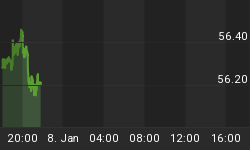
Special Guest: Thorsten Polleit, PhD is chief economist of the precious-metals firm Degussa and co-founder of the investment boutique Polleit & Riechert Investment Management LLP. He is honorary professor at the Frankfurt School of Finance & Management and associated scholar of the Mises Institute.
28 Minutes
READ FULL PAPER
The "Natural Interest Rate" Is Always Positive and Cannot Be Negative
Some economists have been arguing that the "equilibrium real interest rate" (that is the "natural interest rate" or the "originary interest rate") has become negative, as a "secular stagnation" has allegedly caused a "savings glut." The idea is that savings exceed investment, and that a negative real interest rate is required for bringing savings in line with investment. From the viewpoint of the Austrian school, the notion of a "negative equilibrium real interest rate" doesn't make sense at all.
The market interest rate is the outcome of the supply of and demand for savings in the market place. It can be observed, for instance, in the deposit, bond, or loan market for different maturities and credit qualities. The originary interest rate is a category of human action, saying that acting man values goods available at present more highly than goods available in the future. In other words: Future goods trade at a price discount relative to present goods. For instance, 1 US$ available today is preferred over 1 US$ available in one year's time.
If 1 US$ to be received in one year's time is valued at, say, 0.909 US$, the originary rate of interest is 10 percent. (1 US$ divided by 0.909 minus 1 gives you 0.10, or 10 percent, for that matter.) 10 percent is here the originary interest rate (disregarding any other premia).
The "Originary Interest Rate" Reflects a Value Differential
The originary interest rate is expressive of a value differential, which results from so-called time-preference. The term time-preference denotes that acting man prefers an earlier satisfaction of wants over a later satisfaction of wants. Time-preference is always and everywhere positive, and so is the originary interest rate. This is, first and foremost, what common sense would tell us.
The notion that time-preference and the originary interest rate could be zero, does not only sound absurd, it is also a logical impossibility: Positive time-preference and a positive originary interest rate are logically implied in the irrefutably true "axiom of human action."
Human action is purposive behavior, implying the use of means to achieve ends. Action requires time (it is impossible to think otherwise). Thus, time is an indispensable and scarce means for achieving ends. As such, it must be economized, which necessarily implies that an earlier satisfaction of wants is preferred over a later satisfaction of wants.
For (praxeo-)logical reasons, therefore, time preference and the originary interest rate cannot fall to zero, let alone become negative. The implications of a negative originary interest rate cannot even be conceived by the human mind: A zero originary interest rate already implies no action ever into eternity.
The End of the Market Economy
Should a central bank really succeed in making all market interest rates negative in real terms, savings and investment would come to a shrieking halt: as time preference and the originary interest rate are always positive, "capitalistic saving" -- the accumulation of goods designed for improving the production process -- would come to an end.
Capital consumption would ensue, throwing mankind back into poverty. It would be the end of the market economy.
The True Purpose of Negative-Interest-Rate Policy
For some reason, those who argue that the originary interest rate has become negative seem to overlook that the originary interest rate is a phenomena which is not confined to credit markets. It pervades all markets in which present goods are exchanged for future goods. For instance, the originary interest rate prevails at each stage of the economy's time-consuming roundabout production. The originary interest rate also exists in the stock market, where investors exchange present money against a claim on future money (that is a firm's dividend payment).
If they wanted to be consistent, the believers in a negative originary interest rate would have to call for a policy that does not only make interest rates negative in real terms in the credit market, but also in the markets for, say, stocks and housing.
However, a policy that advocates destroying firms' values and peoples' housing wealth wouldn't be taken too kindly by the public at large; and those economists recommending it couldn't expect being cheered.
The consequence of a policy of a negative real market interest rate should have become obvious by now:
It is an actually perfidious policy for debasing the real value of outstanding debt; and it is a recipe for wreaking havoc on the economy.
















